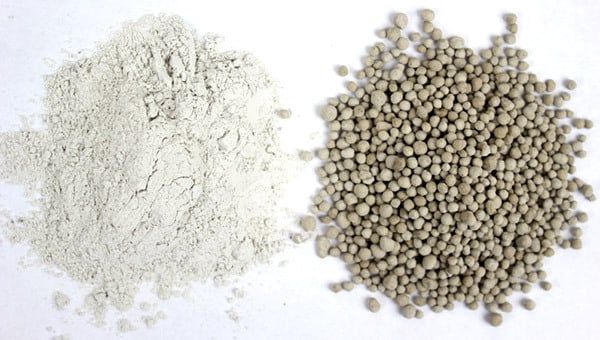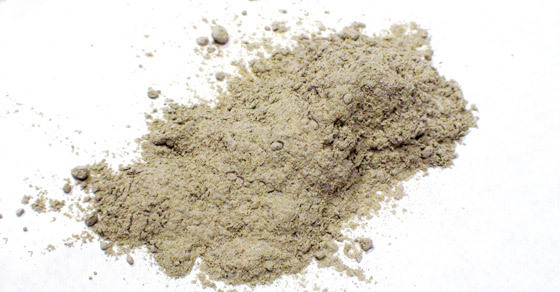Pelletizing is a valuable tool in managing the properties of bulk solids. From flowability to bulk density and so much more, pelletizing gives producers in nearly every industry a way to control the handling and performance characteristics of their bulk solids. And while pelletizing provides a solution to a number of material problems, it sometimes requires material to be pretreated in order to be amenable to pelletizing.
As the leading provider of pelletizing equipment and systems, FEECO regularly works with customers not only to pelletize their material, but also to identify the specific conditions necessary for their material to agglomerate as desired. What follows is an overview on the most common types of pretreatment employed prior to pelletizing, and in what settings they are used.
About Pelletizing
Pelletizing, not to be confused with pelleting (extrusion), is a type of agitation agglomeration, also known as wet granulation. This process utilizes moisture and agitation to encourage pellet formation and subsequent growth from material fines. This process yields rounded granules and can produce granules in a wide range of sizes.
Pelletizing may be carried out using any of the following devices, either alone, or in combination:
- Disc Pelletizer (Pan Granulator)
- Granulation Drum (Agglomeration Drum or Granulator)
- Pin Mixer
- Pugmill Mixer (Paddle Mixer or Pugmill)
Each type of equipment, and combination thereof, produces unique results. The most common pelletizer plant configuration, particularly when looking to create a high yield of on-size product, is the pin mixer-disc pelletizer combination. When a high throughput is required, the granulation drum is typically the device of choice.
Simplified process flow diagram (PFD) for a typical pin mixer-disc pelletizer plant.
Why Pelletizing Pretreatment May Be Necessary
The pelletizing process can be used on a wide range of materials, from chemicals and fertilizers, to minerals and ores. But oftentimes, material cannot be pelletized in its existing state; material must fall within a general set of parameters in order to be capable of pelletizing.
When feedstock does not meet the necessary parameters, one of two things typically happens:
The material won’t agglomerate
Depending on how far outside of the parameters the feedstock lies, and which parameters are off, it may not be possible to form pellets from the feedstock at all. This is typical when the feedstock is either too wet, or when particles are too large to join and hold together. Similarly, coarse fibers, such as those found in digested dairy manure, can also inhibit pellet formation.
Or, the material agglomerates, but produces low-quality pellets.
In other cases, pellets may form, but could be inferior in any number of ways, including:
- Inadequate crush strength
- Insufficient green (wet) strength
- Abnormal shape
- High moisture content
- Brittle quality
Material Characteristics That Influence the Pelletizing Process
The material characteristics most influential in the pelletizing process are:
- Particle Size Distribution (PSD)
- Moisture content
- Uniformity
he particle size distribution, or PSD, represents a way of expressing the range of particle sizes present in a sample of material, in this case, the feedstock. The PSD also indicates the percentage of material at each size within the given range.
Because the pelletizing process relies on inter-particle forces to form and enlarge pellets, particle size distribution is essential to get right in order for pellet formation to be possible; particles that are too large won’t be able to hold together, while particles too close in size may not be able to form a strong bond, yielding weak pellets.
Moisture Content
Feedstock moisture content is also hugely influential in the pelletizing process, as moisture plays a key role in bringing and holding particles together. If there is not enough moisture present, pellets cannot form, while too much moisture can cause the material to behave like mud, also prohibiting pellet formation.
Uniformity
While uniformity can refer to several particle characteristics, a feedstock that is generally as uniform as possible in every aspect is ideal for pelletizing. Feedstock uniformity is especially important when combining multiple components in the pelletizing process, as a lack of uniformity can otherwise yield unpredictable results.
Uniformity of particle size distribution, moisture content, chemical composition, and more, helps to ensure a consistent feed, and therefore, a consistent product.

Raw (left) and pelletized (right) limestone
Pelletizing Pretreatment Options
Due to the critical nature of these material characteristics in the pelletizing process, pretreatment options focus on bringing these specific feedstock parameters into the range of optimal agglomeration, which differs across materials for each parameter. Depending on the condition of the raw feedstock, pretreatment may or may not be necessary. This differs not only across materials, but also across different sources of the same material. The most common types of pretreatment are explained here.
Drying
When the moisture content of the feedstock is too high, the material will require some sort of drying or moisture reduction process.
While it may seem counterintuitive to dry material just to add moisture to it all over again, pre-drying the material allows moisture addition during the pelletizing process to be tightly controlled – a critical aspect of pellet formation and growth.
Drying may be carried out using any number of techniques, from stack drying, to the use of a rotary dryer.
Another approach to bringing down the overall moisture content of the feedstock is to blend in finished product or recycle. This technique is known as back-mixing and is typically carried out in a pin mixer or pugmill mixer; dried material is uniformly blended with the wet feedstock to reduce the overall moisture content going into the process.
Pre-Moistening
In contrast, pre-moistening can be helpful when the feedstock is excessively dry. While it is possible to add all of the moisture in the primary agglomeration device, by pre-moistening material in a pin mixer or pugmill mixer, the time required in the primary agglomeration device is reduced, allowing for increased production. This pre-moistening technique also de-dusts the material and prepares it for optimal pellet formation.
Pre-moistening may also be referred to as preconditioning.
Crushing and/or Grinding
If the material is too large in particle size, or the distribution of particle sizes is not ideal, a crushing and/or grinding step may be necessary to bring the material into the desired particle size distribution.
FEECO typically utilizes a proprietary blend of particle size distribution for pellet formation, though the optimal particle size distribution can vary depending on the material.
Mixing
Mixing is also a common pretreatment technique in pelletizing materials, particularly when combining disparate powdered solids, or liquid and solid feed components. Mixing is also frequently used to homogeneously combine the powdered feed with the chosen liquid binder when applicable.
Here again, a pin mixer or pugmill mixer may be employed to carry out this pretreatment task.
How to Determine Pelletizing Pretreatment Requirements
The specific conditions under which a material will agglomerate can vary significantly. Even with materials that are well established, the variation across sources often necessitates the material go through feasibility and process development testing in a facility such as the FEECO Innovation Center in order to determine the feedstock characteristics necessary to produce the desired results.
Depending on the process and material goals, experts in the Innovation Center will often start by testing material in its existing state in order to gather a basic understanding of the material and its response to agitation agglomeration. If the material has a moisture content, particle size distribution, or aspect of uniformity that is overtly prohibitive of agglomeration, experts may decide to first bring the material specifications into a range that works for other similar materials based on past experience. The Innovation Center is equipped with a range of support equipment for testing grinding, pre-moistening, drying, and mixing.
Innovation Center experts use small samples of material and batch-scale pelletizing equipment to test agglomeration, modifying the feedstock and equipment configuration as necessary to achieve the desired product specifications. While this process often involves trial and error, it is also based on decades of material testing and process development experience around agglomerating hundreds of materials. This gives those working with the Innovation Center a unique advantage in efficiently bringing their concept to commercialization.
In addition to pretreatment requirements, many other questions around agglomeration can also be answered through testing in the Innovation Center.
Conclusion
Pelletizing gives producers control over important bulk solids characteristics. But not all materials will readily pelletize in their existing state. As such, identifying the pretreatment requirements necessary is essential to being able to produce quality pellets, with feedstock particle size distribution, moisture content, and uniformity being critical in this endeavor.
In addition to manufacturing custom pelletizing equipment and systems, FEECO has become the global resource for testing and developing pelletizing production lines. Our Innovation Center is well equipped in both infrastructure and expertise to help customers identify the specific feedstock pretreatment and processing conditions necessary to produce agglomerates of the desired quality. For more information on our pelletizing equipment or process development services, contact us today!



